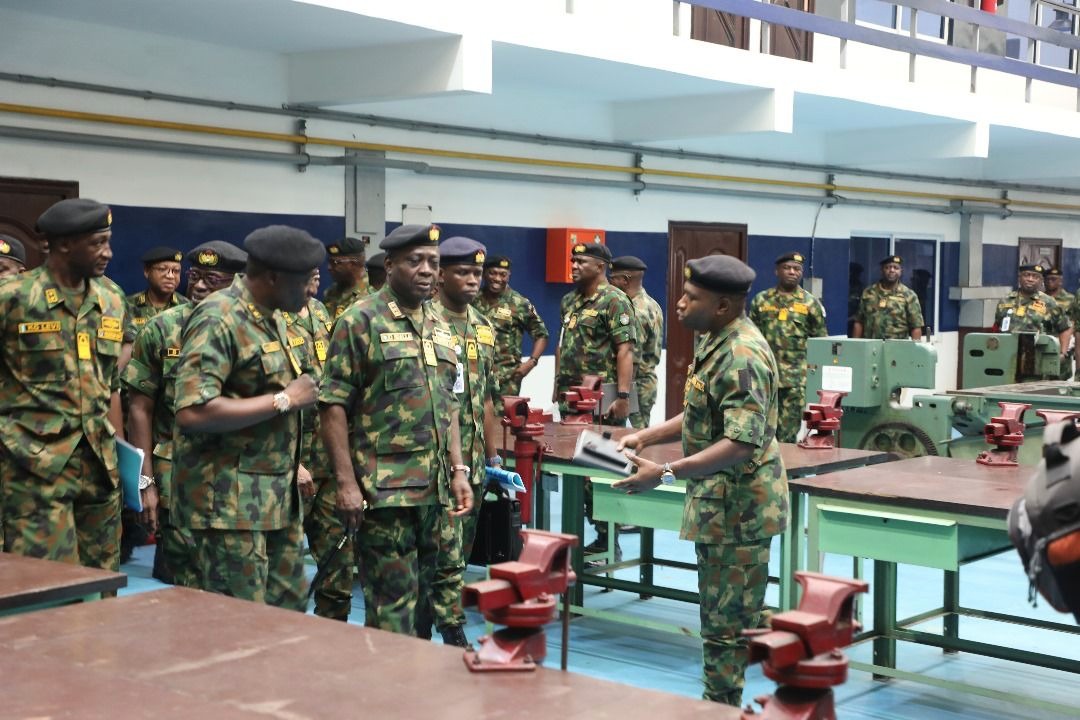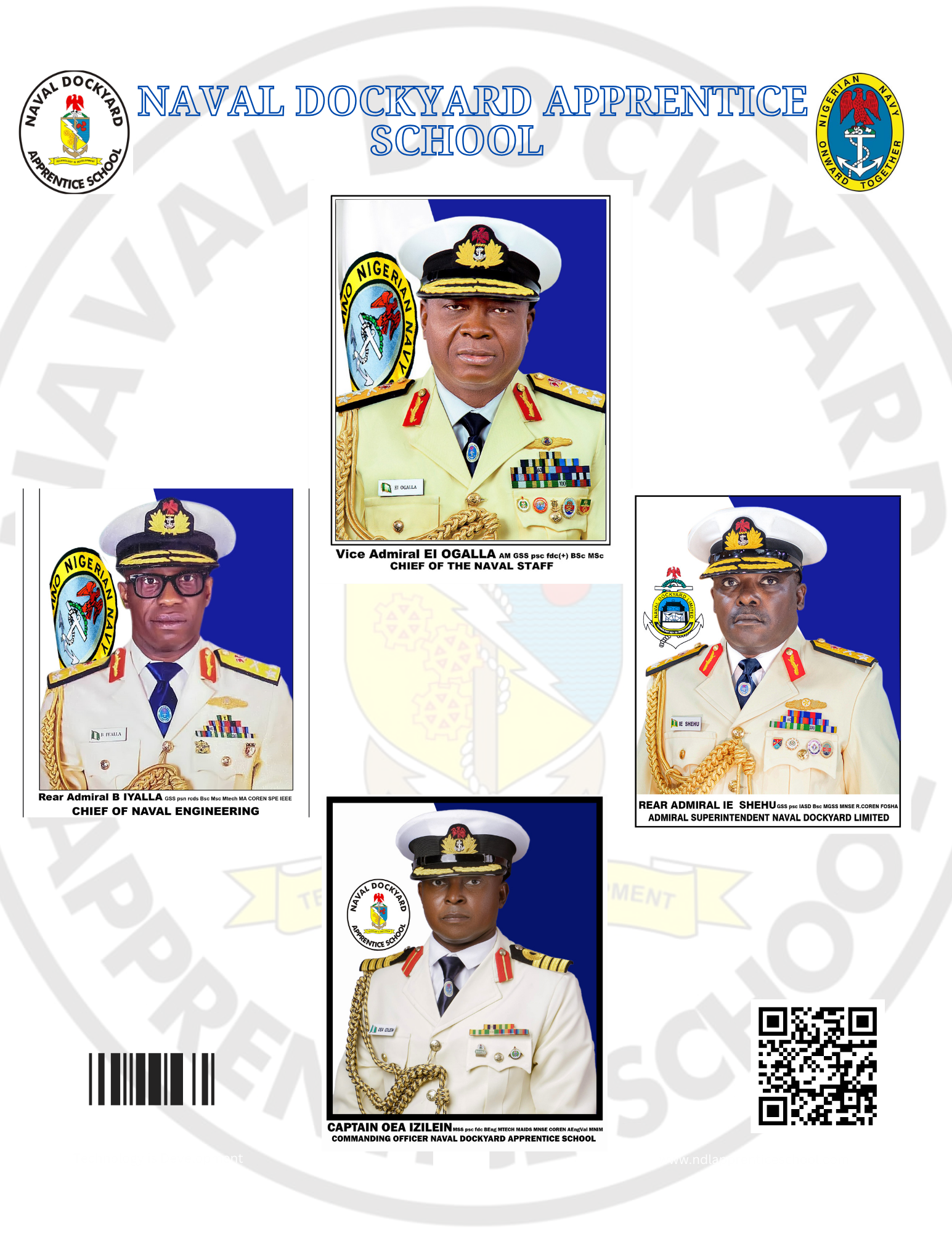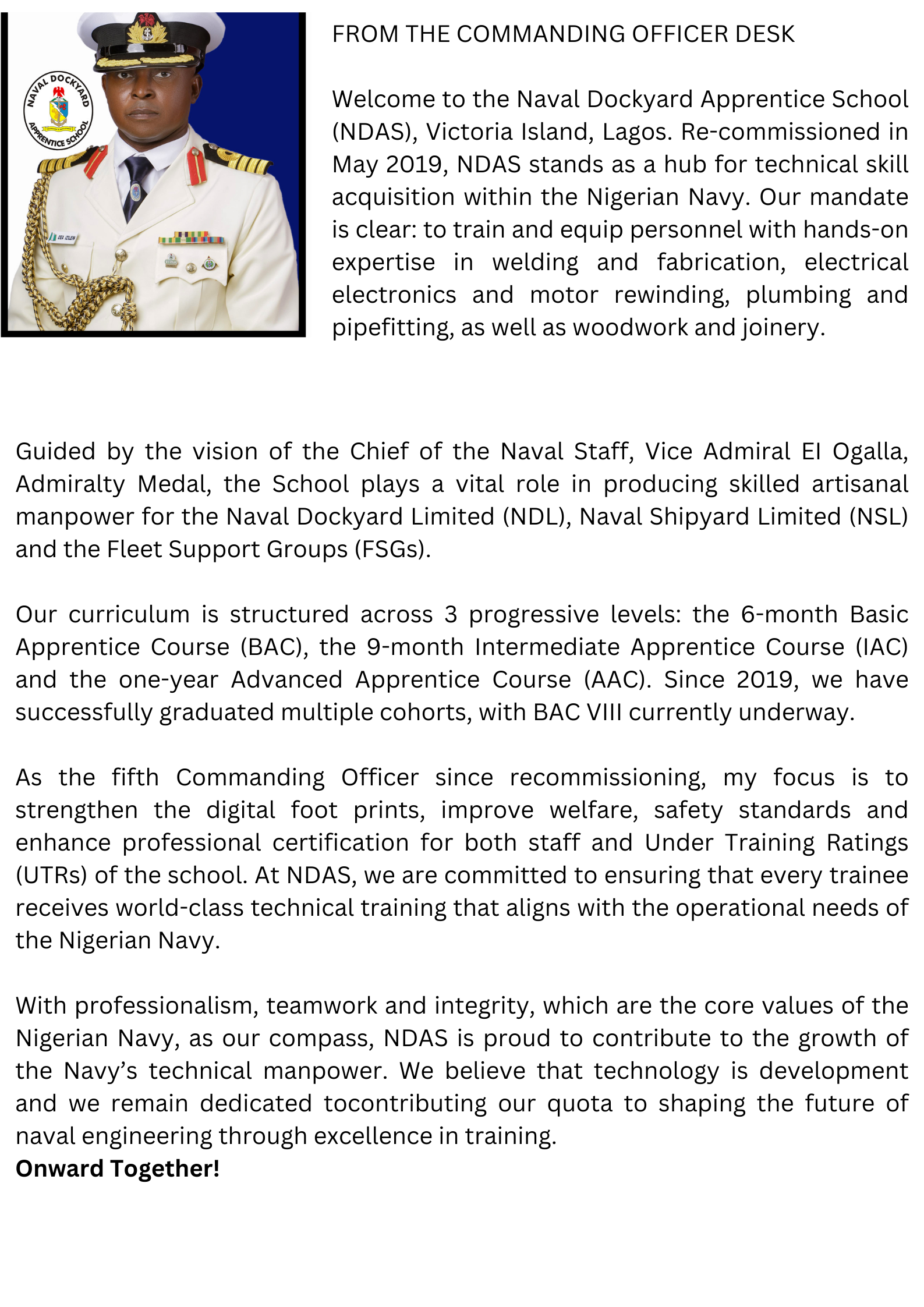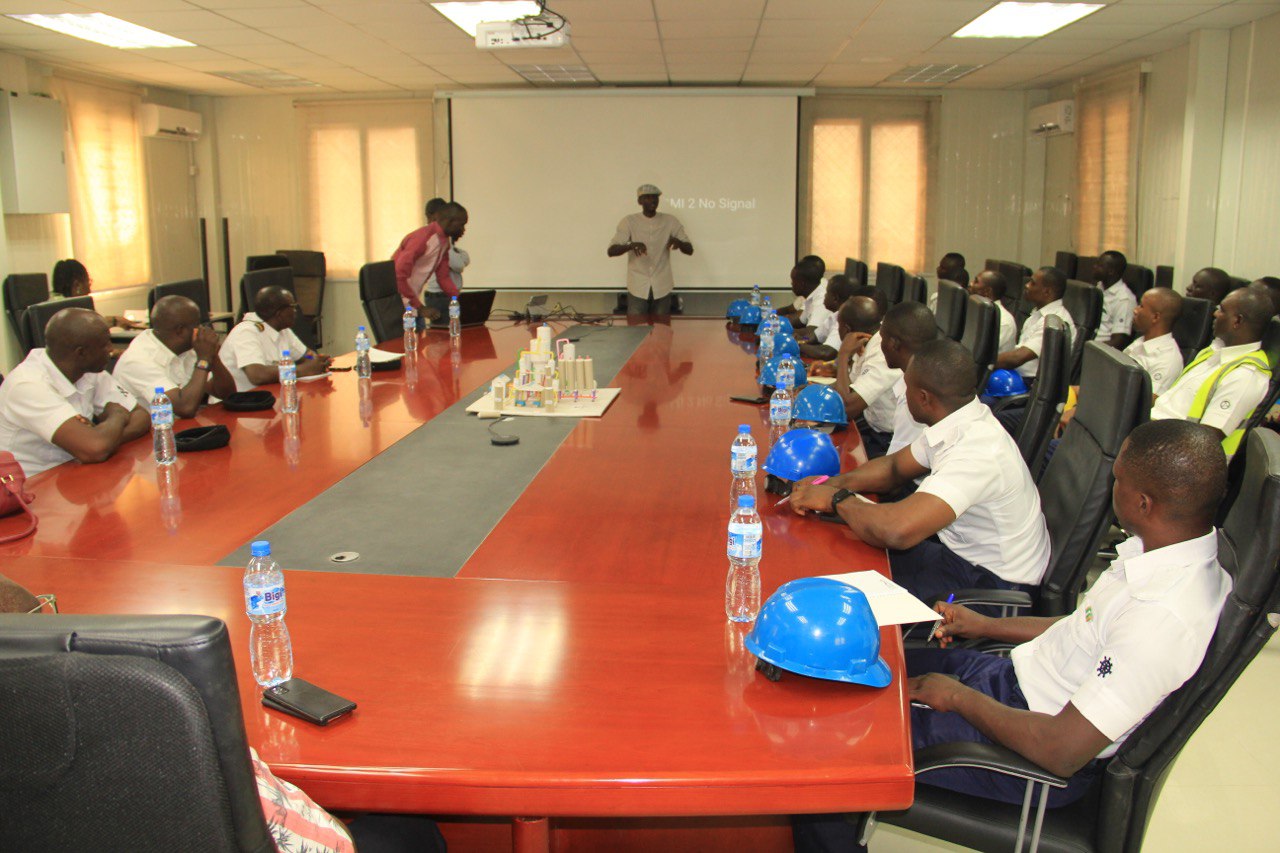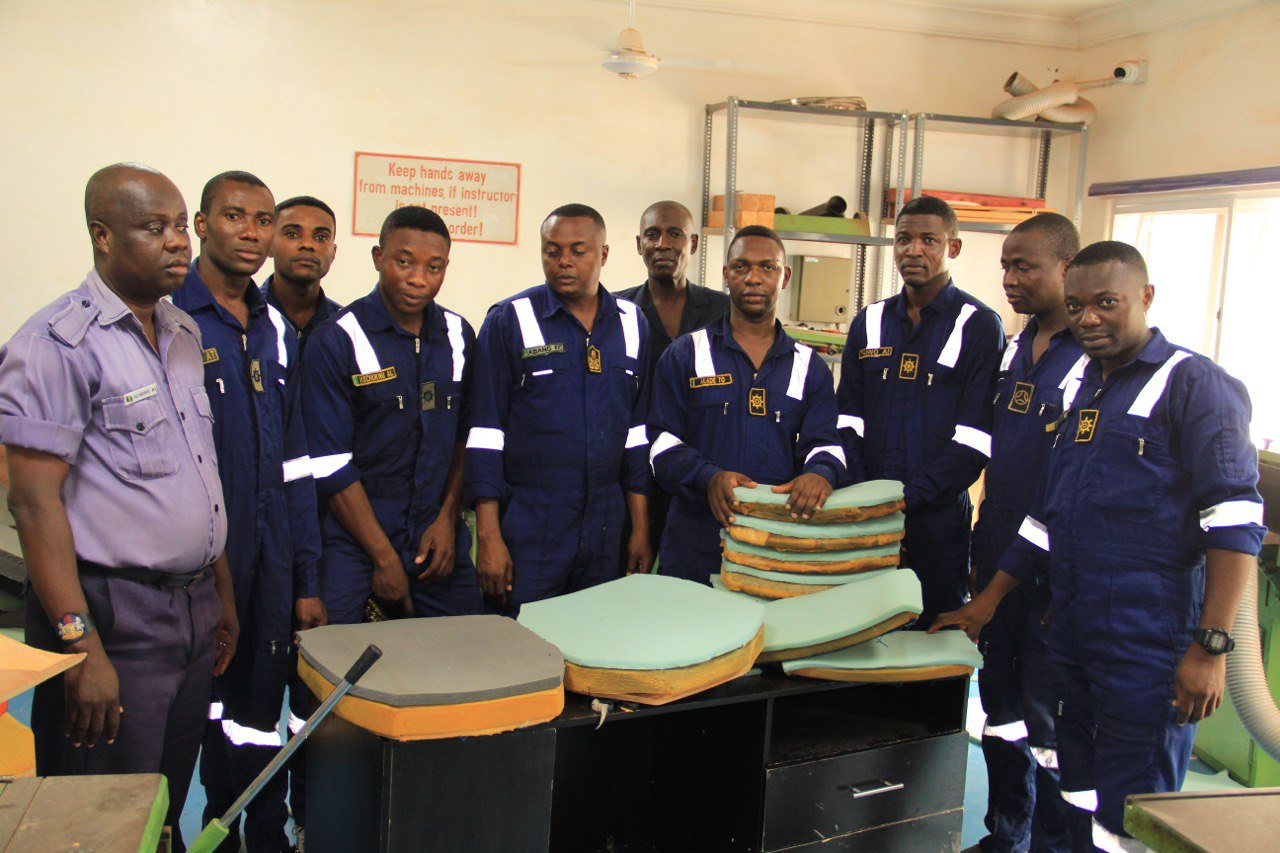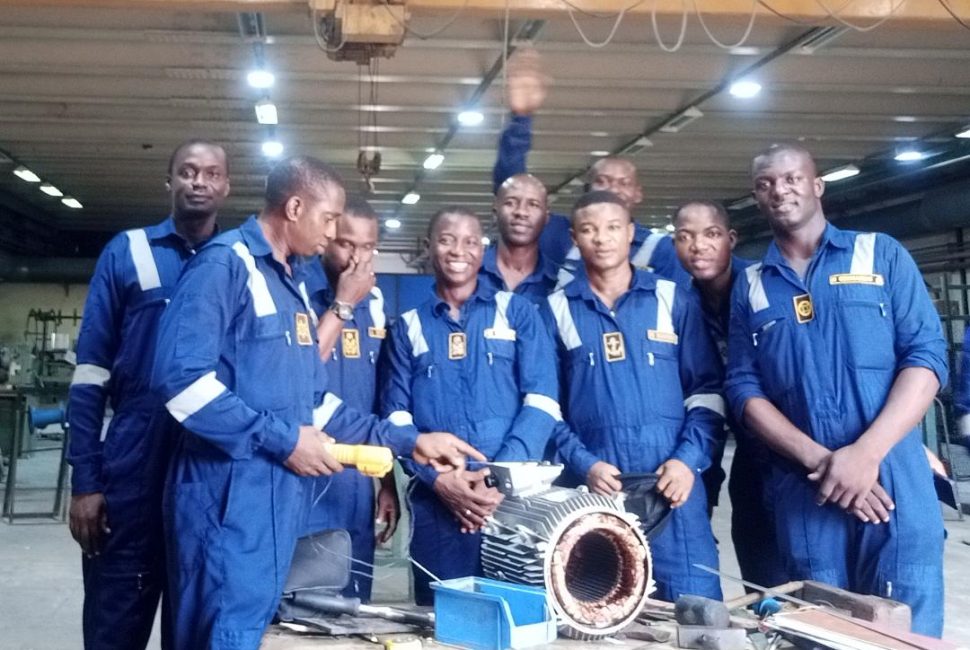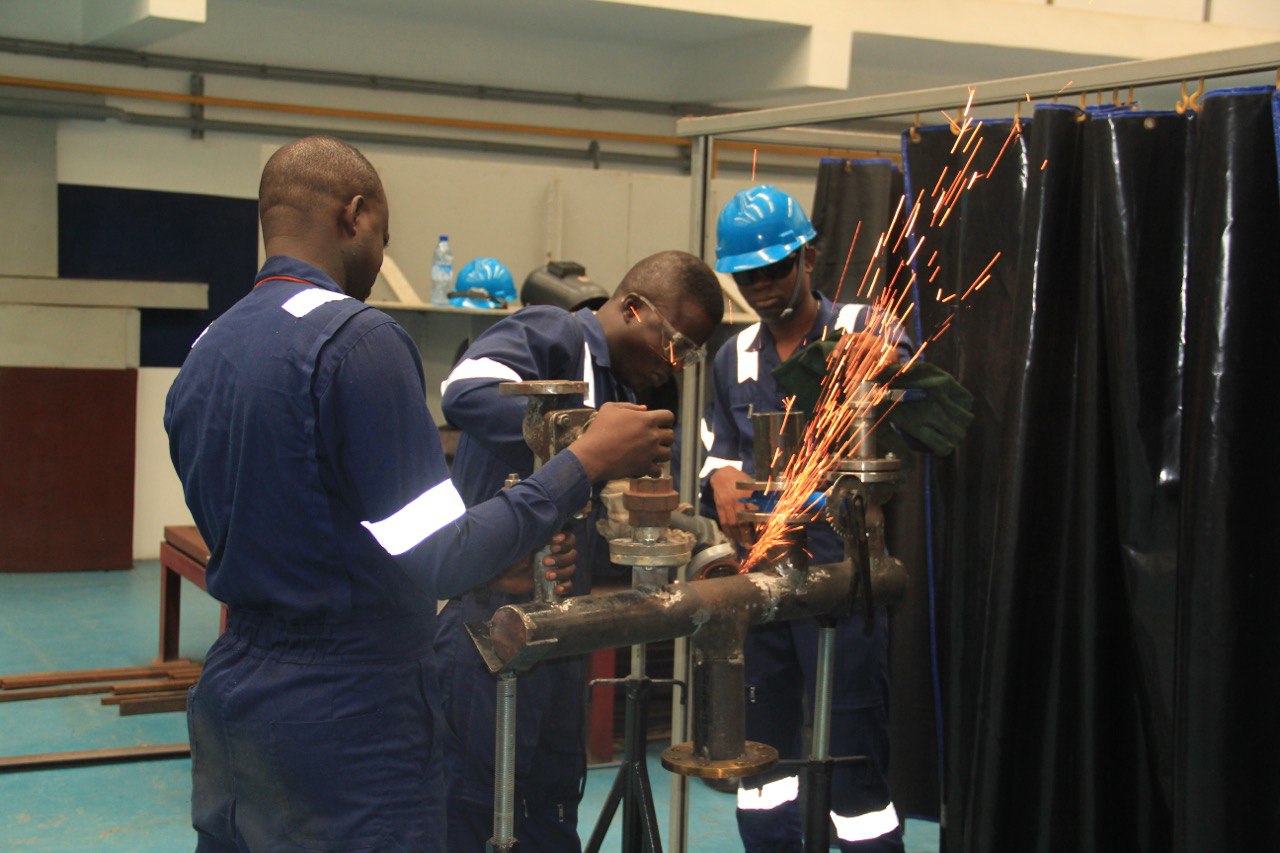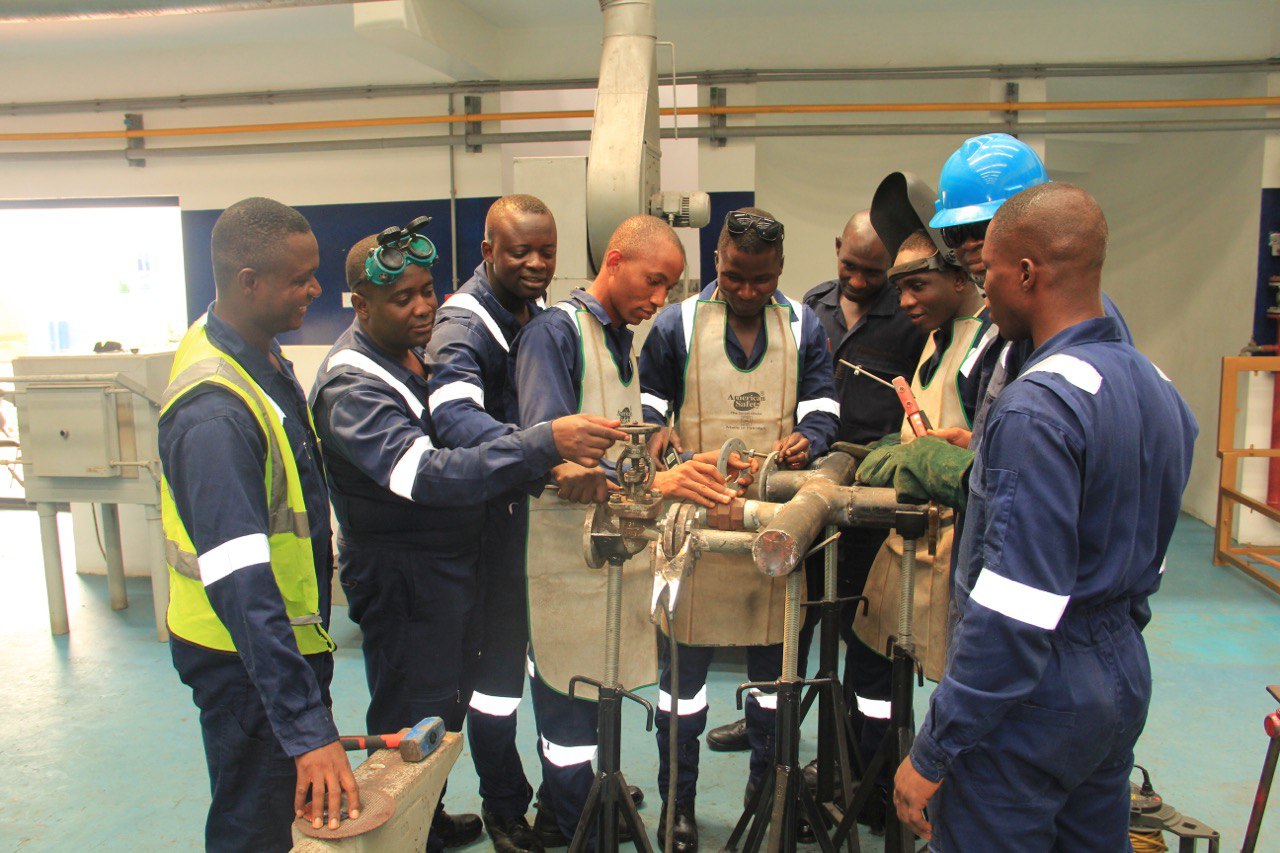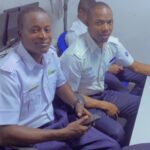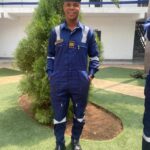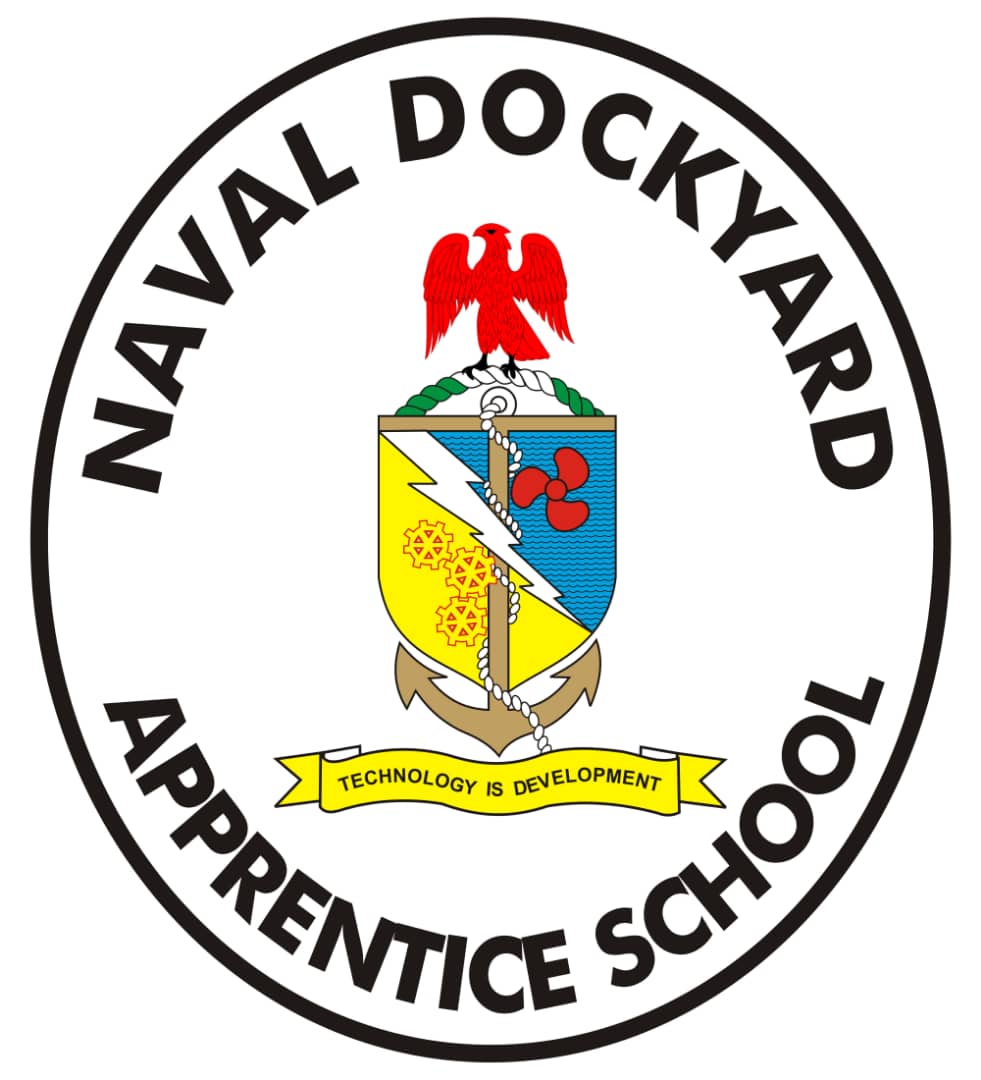COURSES CURRENTLY RUNNING IN NDAS
1. NDAS is mandated to run BAC, IAC, AAC, and other special courses as necessary. However, only BAC is currently running. IAC and AAC are due to commence soon. All the Courses have 4 categories: Electrical Electronics and
Motor Winding, Welding and Fabrication, Carpentry and Joinery, as well as the Plumbing and Pipe Fitting Basic Apprenticeship Courses. Common modules for the courses include Workshop Safety, Measurement and Instrumentation, Entrepreneurship, Computer-Aided Design, First Aid, as well as Concept of
Engineering Design, among others. These common modules established a foundation for the core elective courses in all the categories.
2. Electrical Electronics and Motor Winding. The Apprentices are poised tom learn the design of an electrical power system on board the ship. This Course is taught with particular reference to the operation, maintenance, and provision of a secure power supply. Adequate built-in protection for the equipment and operating personnel is also paramount. The Electrical Course also introduced apprentices to the Festo Automation Programmable Logic Controller (PLC). The Controller demonstrates and experiments with starting and speed control of the electrical motor under different conditions of power supply and loads. The Controller also shows prototypes of critical electrical installations onboard ships. These essential circuits include control and distribution devices, automation circuits, remote control systems, safety devices, and fault detection techniques. Also, the Course involves the use of Multisim™ software to provide simulation, analysis, and Printed Circuit Board (PCB) tools for electrical circuit designs. The Controller and the Simulator are intended for those with excellent or limited knowledge of electrical systems. Experienced instructors are equally available to guide the apprentices, and thereafter, the apprentices will undertake individual practice to demonstrate their competency and proficiency with the system Another aspect of the Electrical Course is motor winding. Motor winding is conducted with the NDL Staff using the NDL workshop and facilities. The Course’s outline for Electrical Electronics and Motor Winding is highlighted as follows:
a. Multisim:
Introduction to multisim.
Multisim user interface.
Placing components.
Simulation.
Virtual instrumentation.
Grapher
Bill of materials.
b. Ultiboard:
Introduction to Ultiboard.
Ultiboard user interface.
Creating a board outline.
Placing parts.
Dragging parts from outside the board outline.
Placing parts from the database.
Moving parts.
Placing traces.
Placing a manual trace.
Placing a ‘follow me’ trace.
Connection machine trace.
Auto part placement.
Auto routing trace.
Viewing design in 3D.
c. Electric Motor and Winding:
Principles of electricity.
Electric motor winding tool/materials.
Workshop and personal safety.
Types of windings.
Magnetic field creation and movement.
Electrical machine connections.
Measuring instruments and magnetic movement graph plotting.
Basic principles of motor control.
Lockout and tagout procedure.
Control panel devices.
Manual starters.
Contactors and control relays.
Current protection devices.
Specification reading.
Symbols, designations, and diagrams.
Basic control circuits.
Motor starters.
Two-wire and three-wire controls.
Manual reversing starters.
Reversing starters.
Multiple pushbuttons.
Jogging control circuits.
Friction brakes.
Motor starters with jogging.
Reversing starters with jogging.
Reduced AC voltage starters.
Soft starters.
Time relay circuits.
Time relays.
Plugging with time relays.
Primary resistor starters with time relays.
Motor Drives:
Motor Drives, complement the exercises contained in the course Basic Controls. They provide the knowledge necessary to perform motor controls with the help of motor drives.
(i)Unit 1 introduces the AC Drive and its main functions,
(ii)Unit 2 introduces the DC Drive and its main functions.
AC Drives
Volts Per Hertz Characteristics
Ramp and Torgue boost
Protection
Breaking and Jogging
Remote Controls
DC Drives
Current Limiting and IR Compensation
3. Plumbing and Pipe Fittings. Increasing challenges to build vessels and perform maintenance tasks under tight schedules mandate personnel to repair damaged plates and pipes safely, efficiently, and quickly. The Pipe Fitting Course acquaints apprentices with the relevant safety precautions and the requisite knowledge of the various plumbing equipment and processes. It also identifies proper schedules of pipes and material selection suitable for specific designs and repaired jobs onboard ships. Welding and Fabrication. The Course’s outline for
plumbing and pipe fittings is highlighted as follows:
a. Pipe Fitting:
Safety precautions in the workshop and field.
Introduction to pipe fitting tools and equipment.
Proper handling of pipe fitting equipment.
Making out joints and preparation of joints in pipe fitting.
Oxyacetylene cutting, arc welding, and oxyacetylene brazing.
Industrial visit to Dorman Long Engineering Limited workshop
at NDL to see some ongoing pipe works joint preparation.
b. Plumbing:
Introduction to plumbing tools and equipment.
Proper Handling of plumbing equipment.
Making out joints and preparation of joints in plumbing.
Types and dimensions of plumbing pipes.
Characteristics of different types of plumbing pipes.
Types and dimensions of other plumbing fittings.
Uses of plumbing pipes and fittings.
Polypropylene Random Copolymer (PPR) pipe works (Conduit
and Surface).
Polyvinyl Chloride (PVC) and High-Pressure Pipe Works for
Conduit and Surface pipes.
4. Welding and Fabrication. The Welding and Fabrication Course acquaints apprentices with the relevant skills to fabricate and repair metal objects. The Welding knowledge provides the safety precautions to be observed and the
requisite knowledge of the various welding equipment and processes. It also identifies proper welding materials and parameters for multiple jobs. The Course’s outline for Welding and Fabrication is highlighted as follows:
a. Metals:
Definition of metals.
Types of metals.
General physical property of metals.
Physical property of metals.
Basic composition and application of metals.
b. Manufacturing Process:
Copula process of manufacturing cast iron.
Blast furnace process of manufacturing pig iron.
Direct reduction process of manufacturing of steels.
c. Welding and Fabrication:
General workshop safety.
Welding safety.
Electric arc welding.
Welding position.
Grove welding.
Gas welding (oxyacetylene).
Welding tools and equipment.
Practical for welding and fabrication.
5. Carpentry and Joinery. Carpentry and Joinery Course, or Carpentry for short, is integral to the construction and fabrication industry. It is well suited for those who are good with their hands, enjoy using tools, and appreciate the feeling of pride in doing a good job. The Carpentry course in NDAS is designed to introduce apprentices to carpentry work within the shipbuilding industry. It focuses on using hand tools, portable power tools, and machines to master the art of creating woodwork. It further identifies categories of components, materials, timber processing, and their applications in the industry. In line with the curriculum of the School, the apprentices constantly engaged in practical work, visits to NDL, ships, and other relevant engineering organisations in Lagos areas. The Course’s outline for Carpentry and Joinery is highlighted as follows:
a. Carpentry Practical:
Introduction to Carpentry and Joinery.
Definition of terms.
Measurement and precision rules
Stack, Kilning and identification of woods (hard, semi hard and soft).
Using hand tools to achieve designs and joints.
How to calculate the actual parameters of a product from a
pictorial view.
Colour tilting and spraying.
Clouding and panelling of walls with High-Density Fibreboard
(HDF) and 100% wood.
Basic upholstery in sofa and bedding.
Showroom and quality finish space utilization.
b. Wood Processing
Definition of wood processing.
Wood pulping and chipping.
Prefabrication of wood.
Structure of wood.
Chemical composition of wood.
Characteristics of wood.
Sawmilling.
Water in wood.
Drying of wood.
Wood preservation.
Types of wood.
Wood storage.
Timber conservation.
Common wood-destroying agents.
Products of wood processing.
Manufacture of board or engineered wood.
